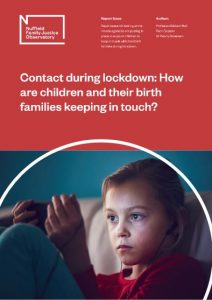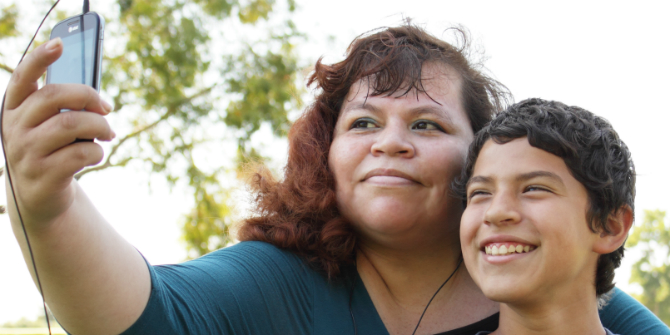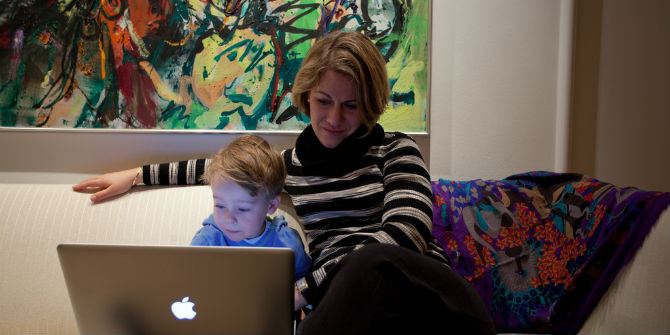 The current coronavirus (COVID-19) pandemic is turning many social work practices on their heads and local authorities are making adjustments extremely quickly under significant pressure. One area of practice that has required a rapid rethink is promoting links between children and their birth families. For www.parenting.digital, Professor Beth Neil and Ruth Copson talk about the findings from their research on managing children’s connections to birth families during social isolation and lockdown.
The current coronavirus (COVID-19) pandemic is turning many social work practices on their heads and local authorities are making adjustments extremely quickly under significant pressure. One area of practice that has required a rapid rethink is promoting links between children and their birth families. For www.parenting.digital, Professor Beth Neil and Ruth Copson talk about the findings from their research on managing children’s connections to birth families during social isolation and lockdown.
Maintaining family links is important for helping children cope with separation, loss and identity issues. Social distancing has temporarily put a stop to the majority of face-to-face encounters. Like all families involved in lockdown, foster, adoptive and kinship families have been exploring the use of digital technology to enable children to stay in touch with family members they do not live with. This poses significant new challenges and the need for swift learning. But it is also creating surprising and unexpected opportunities, with the hope that children’s ‘family time’ may become more individualised, flexible and rewarding.
Comfort with digital formats
Discussions around technology, social media and contact for looked after and adopted children have tended to focus on potential risks such as unsupported contact between children and their birth families, or parents inappropriately sharing children’s details online. The current situation is allowing people to also consider potential positive uses of technology.
In the pre-pandemic world ‘contact meetings’ are often experienced as impersonal or not ‘family-like’ (hence the term ‘family time’ is increasingly preferred). Letterbox contact (the norm in adoption) is a notoriously difficult medium for enabling rewarding and lasting communications. In contrast, for some children and young people, communicating using digital media can feel less tense and awkward than a formal meeting, and more interactive and engaging than a letter.
Children and young people, and in many cases their birth parents, have grown up with technology. Texting, video-calling and using social media may feel comfortable, familiar and enjoyable. Digital technology can be used flexibly to meet a number of needs. Teenagers may enjoy ‘touching base’ through video calls with parents. A video call can entail a carer showing a baby playing with their toys, a toddler playing in the garden or an older child showing off their artwork. Brothers and sisters who can’t meet up may enjoy playing online games or quizzes together or sharing dance or music videos. There are many ways of being creative, with some excellent ideas from the University of Sydney.
Communicating through apps and video may be more familiar to young people than it is to some carers or social workers. It may be beneficial for children to share their knowledge, to talk about the different ways they use digital and how they prefer to communicate. However, it is important to remember that just because children are familiar with technology does not necessarily mean they have the competence and confidence to use it appropriately and safely in this context. There is an important role for social workers and carers to help children manage how they use technology and to understand and recover from the emotional impact it may have. It may be particularly important to consider how children who are used to having supervised family time in contained settings such as contact centres may feel about ‘meeting’ parents online in their living space. But in using digital contact we need to be risk aware without being unnecessarily risk-averse. Managing any risks associated with using digital media for contact requires new learning.
 Digital poverty and digital competence are two issues that have been exposed during this pandemic. Practical ways that local authorities are supporting digital access include buying, loaning or donating second-hand equipment and phone credit to birth parents (and some carers) who don’t have these already. Initiatives such as DevicesDotNow are working to meet this challenge on a national level. Many people may be able to get online but poor connections, limited credit, lack of suitable devices and low digital skills and confidence all impact people’s quality of access and lead to exclusion and disempowerment.
Digital poverty and digital competence are two issues that have been exposed during this pandemic. Practical ways that local authorities are supporting digital access include buying, loaning or donating second-hand equipment and phone credit to birth parents (and some carers) who don’t have these already. Initiatives such as DevicesDotNow are working to meet this challenge on a national level. Many people may be able to get online but poor connections, limited credit, lack of suitable devices and low digital skills and confidence all impact people’s quality of access and lead to exclusion and disempowerment.
Many professionals and carers may also struggle with navigating technology and adapting practice to an unfamiliar medium. Services such as Learn My Way are available to help people get the basic skills they may need to use video calling and new devices. Some carers may need additional help and ‘check-ins’ from social workers. Parents who are struggling to engage with their child on a video call may benefit from ideas and activities they can use to make calls more interactive. Digital creates new opportunities and risks that may be unfamiliar. However we must not get too caught up on ’how’ to use these new tools or we may risk losing sight of the ‘why’ they are being used.
Building empathy, trust and collaboration
‘Contact’ is so much more than a meeting, a letter, a phone or video call. In seeking to enable contact – we need to keep front and centre its purpose – enabling the relationships that underpin these encounters. The strong message from children and young people is that they need to feel they can be part of their birth family as well as part of their foster, adoptive or kinship family. But individual children and young people will want different things from this at different times, listening to them and being flexible in our responses is essential.
How well the adults around the child understand each other and are able to work together is important. Good relationships are built on trust and empathy, and there are opportunities for both to be built at this time of crisis. For birth parents, not being able to see their children for a while may well be distressing and anxiety-provoking, particularly where contact is very limited anyway (such as is typical in adoption), where children may have additional health needs, and/or where they have only recently entered care. Reaching out to reassure parents retains the core values of relationship building and empathy in these difficult times. For example, we have heard that some local authorities are asking all their adoptive parents to provide a brief additional update to birth parents. Likewise, foster carers are being supported in providing daily photos and videos to parents (particularly in the case of young babies). For one adoptive parent, initiating extra contact has led to hearing from a birth parent who hasn’t responded to any letters for years.
Changing formats for family contact time is also providing opportunities for increased communication between the adults who care about the child. Foster carers may previously have waved children off as they were taken to see parents by their social worker. Instead, they may now be helping children make video calls, giving carers and parents opportunities to talk and to work together more flexibly to find what works best for the child. This in turn may help children feel that their birth family home and foster home are more integrated.
Where the increased involvement of carers in virtual contact generates new and positive relationships between adults, this may lead to an enduring resource for children in the future. To help these emerging new relationships some carers may require support in thinking through the technical, practical and interpersonal challenges that having a more central role facilitating contact can raise. At a practical level this may involve supporting carers to think through how to manage the content, frequency and duration of calls. At a more emotional level, the feelings of carers about bringing birth families into their home through video calls also needs consideration.
Alternatives to face-to-face contact require careful thinking in light of current restrictions. The lack of opportunities for direct meetings has potentially serious consequences in terms of the erosion of parent/child relationships, particularly for babies and young children who have recently entered care. Without wanting to diminish these difficulties, we are seeing some inspiring examples of creativity, flexibility and compassion in a time of adversity, and as one respondent said: ‘the human need to connect is very clear to see in these times and it absolutely focuses us all on the importance of relationships.’
Notes
This text was originally published on the Research in Practice blog and has been re-posted with permission.
First published at www.parenting.digital, this post gives the views of the authors and does not represent the position of the LSE Parenting for a Digital Future blog, nor of the London School of Economics and Political Science.
Featured image: photo by Tatiana Syrikova from Pexels





